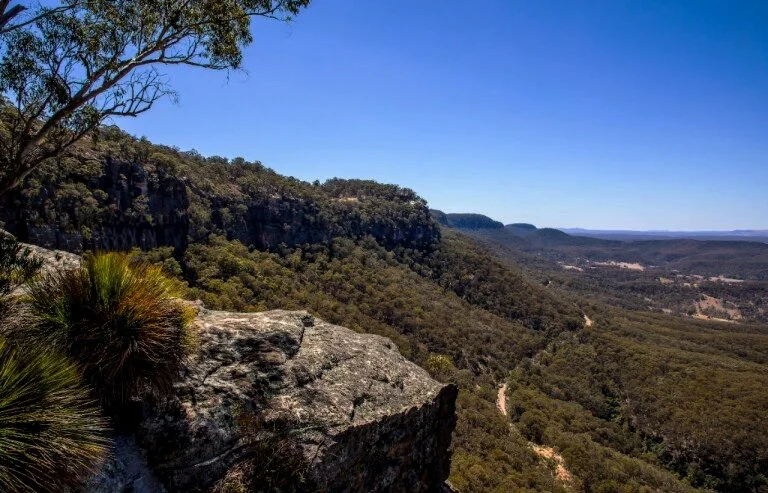The world’s six widest canyons
1. Capertee Valley, Australia
Width: 30 km (19 miles) | Length: 48 km (30 miles) | Depth: 1.6 km (0.9 miles)
Located in New South Wales, the Capertee Valley is often referred to as the "Grand Canyon of Australia." It is about 30 km (19 miles) wide and extends for approximately 48 kilometers (30 miles).
The canyon is situated within the Sydney Basin, which is a sedimentary basin formed during the Permian period around 300 million years ago. The dominant rock formations in the region are sandstones, mudstones, and shales. These sedimentary rocks were deposited in a shallow marine environment, and over time, they were subjected to immense pressure and tectonic forces, resulting in the uplift and folding of the strata.
2. Grand Canyon, United States
Width: 29 km (18 miles) | Length: 446 km (277 miles) | Depth: 1.8 km (1.1 miles)
The Grand Canyon in state of Arizona of the United States of America, is one of the most famous canyons in the world. It stretches approximately 446 kilometers (277 miles) long and has a maximum width of about 29 kilometers (18 miles).
The Grand Canyon's geology is characterized by its distinct rock layers, which reveal a cross-section of the Earth's crust. The oldest exposed rocks at the bottom of the canyon date back nearly 2 billion years, while the uppermost layers are relatively young, at around 230 million years old.
3. Fish River Canyon, Namibia
Width: 27 km (17 miles) | Length: 160 km (99 miles) | Depth: 550 m
The Fish River Canyon is the largest canyon in Africa, located in Namibia. It stretches approximately 160 kilometers (99 miles) long and reaches widths of up to 27 kilometers (17 miles).
Classified as a rift valley, resulting from the movement and separation of tectonic plates, the canyon cuts through the rugged landscape of the southern African plateau. The rocks found in the canyon include sandstones, quartzites, and shales, which provide valuable insights into the geological evolution of the region.
4. Hell's Canyon, United States
Width: 16 km (10 miles) | Length: 201 km (125 miles) | Depth: 2.4 km
Situated on the border of Oregon and Idaho, Hell's Canyon is the deepest river gorge in North America. It has a maximum width of around 16 kilometers (10 miles) and reaches a depth of approximately 2,436 meters (7,993 feet).
The geology of Hell's Canyon is diverse and complex, featuring layers of sedimentary rock, volcanic deposits, and uplifted ancient granitic rocks. The region showcases a series of faulting events and volcanic activity that played significant roles in its formation. The towering cliffs that flank the canyon reveal the various layers of rock, offering a glimpse into the region's geological history.
5. Blyde River Canyon, South Africa
Width: 15 km | Length: 26 km (16 miles) | Depth: 800 m
Blyde River Canyon, situated in Mpumalanga, South Africa, is one of the largest canyons in Africa. It reaches a width of approximately 15 kilometers and spans around 26 kilometers (16 miles) in length.
The canyon was formed through the erosive action of the Blyde River and its tributaries, which carved their way through the landscape. The layered rock formations in the Blyde River Canyon reveal a fascinating geological history, showcasing a diverse range of sedimentary deposits including sandstone, shale, and quartzite. The canyon's iconic landmarks, such as the Three Rondavels and the Pinnacle, exhibit the spectacular sculpting power of erosion, showcasing towering cliffs, dramatic overhangs, and deep valleys.
6. Copper Canyon, Mexico
Width: 4 km | Length: 540 km | Depth: 1.8 km
Copper Canyon, or Barranca del Cobre, is a series of canyons in the Sierra Madre Occidental mountain range in Chihuahua, Mexico. It has a maximum width of around 19 kilometers (12 miles) and is deeper than the Grand Canyon.
This canyon system is a result of complex geological processes that have shaped the region over millions of years. The canyons were formed through a combination of tectonic activity, erosion by rivers, and weathering. The area consists of a series of interconnected canyons, with Copper Canyon being the most prominent. The geology of the Copper Canyon is characterised by rugged cliffs, deep gorges, and towering peaks. The rock formations within the canyon showcase diverse layers of sedimentary, metamorphic, and volcanic rocks, providing a rich tapestry of colors and textures. The canyon's name comes from the copper deposits found in the region, which have been exploited for centuries.







